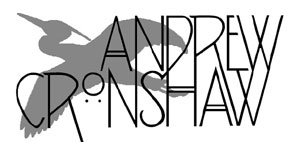
- Andrew Cronshaw website -
- Andrew Cronshaw MySpace -
- Cloud Valley Music website -
- Andrew Cronshaw website -
- Andrew Cronshaw MySpace -
- Back to Reviews Introduction page -
Written for The Gramophone, 1998
VARIOUS ARTISTS
Yoik - A Presentation of Saami Folk Music
(Boxed set of three discs: 228 minutes: ADD, and 310-page hardback book in
parallel-text Swedish and English)
Caprice CAP 21544 (1997)
The Sámi people (foreigners used to call them Lapps) were, it’s thought, the
first humans to settle in the Nordic area of northern Europe. In
time they were pushed northward by southern tribes, and now their territory is the
northern parts of Norway, Sweden, Finland and north-west Russia. Criteria for
estimating the population vary, but they now number probably no more than
50-75,000, speaking several languages of the Finno-Ugrian family. They have
virtually no instrumental tradition, since wood was scarce and they were
carriers of few possessions as they followed their reindeer’s seasonal
migrations.
But they did, and do, sing. Their songs, joiku
(the spelling, as of all transcribed Sámi words, varies), are one of the most
visible displays of an older stratum of European music which is so radically
different from what we make now that it doesn’t really mix, and so has continued
fairly unmodified by outside influence through centuries, in much the same way
as has Native North American music (which in some aspects it resembles). They’re
sung, or rather joiked, solo, often with just vocables; when words are used
they’re usually descriptive rather than narrative. Using a limited set of notes,
and various vocal textures, a singer joiks a person, a place, or an animal,
improvising afresh or drawing on an existing joik, in effect writing in or
reading from a musical memory-file. A joik to a child may develop as the child
grows up; as Wimme Saari says, “joik is like life”.
There are modern joikers and other Sámi singers
who have become well-known largely through their performances with instruments,
but the solo form is still alive today; indeed the commercial success of the
likes of Nils-Aslak Valkeapää, Wimme Saari and Mari Boine has helped its
revitalisation.
The splendidly produced boxed set of 3 CDs and a
310-page hardback book, part of Caprice’s classic 25 CD series Musica Sveciae
- Folk Music in Sweden, contains all the recordings made on two trips in
1953 for the Swedish Broadcasting Company by Matts Arnberg, Håkan Unsgaard and
Israel Ruong. They visited several regions of Swedish Sámiland, recording
members of distinct groups including both Forest and Mountain Sámi. The
recordings, 195 joiks from 33 people, were state-of-the-art for the time, so
quality is fine. Taken just as sound, they can be hard to comprehend, but in
conjunction with the book’s descriptions and atmospheric illustrations and
photos (very few of which are of the singers, strangely) the whole is a glimpse
through a door-crack back to a nearly-forgotten way of music, but one whose
scent is strong in the new musical breeze from Norden.
“So I’ll joik Storfjället’s herd, when the
geldings crowded eastward and their antlers touched; but now they’ve disappeared
and strangers have come” - Anna Oskarsson, Tärnaby.
Andrew Cronshaw
© The
Gramophone 1998
Links:
It's not practical to give, and keep up to date,
current contact details and sales sources for all the artists and labels in
these reviews, but try Googling for them, and where possible buy direct from the
artists.
CDRoots.com in the USA, run by
Cliff Furnald, is a reliable and independent online retail source, with reviews,
of many of the CDs in these reviews; it's connected to his excellent online magazine
Rootsworld.com
For more reviews click on the regions below
NORDIC
BALTIC
IBERIA (& islands)
CENTRAL & EASTERN EUROPE, & CAUCASUS
OTHER EUROPEAN AMERICAS OTHER, AND WORLD IN GENERAL
- Back to Reviews Introduction page -